You Have the Power to Change.
This comes down to Y O U. You’re in control. You have the power and choice to change if you want. And, you should accept that the brain is a changeable thing.
What do we mean by this?
What you focus on and think about creates new synapses and neural pathways. You can change your brain by using different words that create new connections and pathways.
This is worth repeating. You can change your brain.
You can do this by embracing new thoughts and behaviors. The starting point is to replace the negative language you use about yourself with positive language.
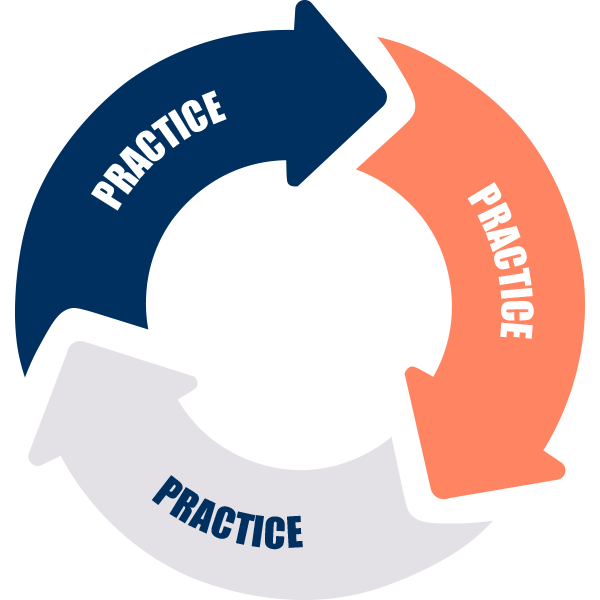
It is essential to practice repetition of the new activity (thoughts, language) to help the newly formed pathways become stronger. The more times you repeat your new thoughts, the more your brain cells “fire” to conduct the new pattern.
Swapping out the negative pathway for a positive one will start to change your brain, forming new neural pathways that become the new normal – your new, healthier self.
Your brain starts to rewire itself with this simple change of mindset.
The Method
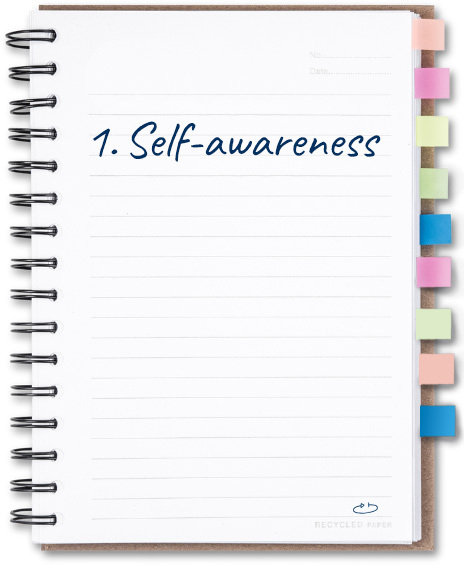
Become aware of your thought process, negative thinking, and/or behavior/habit you want to change.
Principle: Our beliefs determine our behaviors.
Now is the time to be honest with yourself. You are battling something that’s negatively impacting your life. No matter how big or small it is there, it doesn’t serve you, and it’s time to make a change.
You are in control.
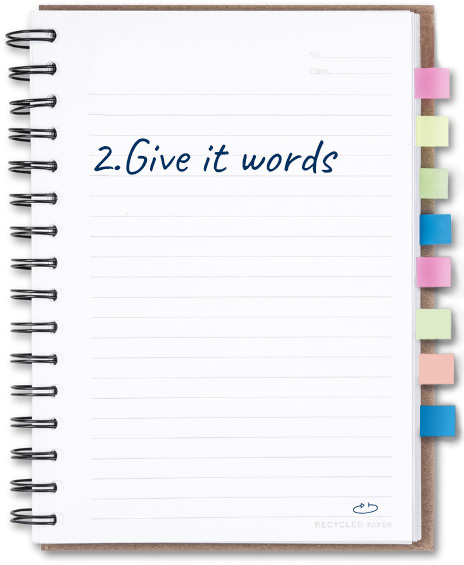
Write down on paper the behavior/habit you want to change.
Example:
I want to stop vaping.
I want to stop eating sweets.
I want to stop drinking.
I want to stop putting myself down.
I want to stop skipping workouts.
I want to stop texting my ex.
Whatever it is that you want to change,
write it down.

Your behaviors are a reaction to something in your life. Stress, work, relationships – there’s a trigger causing your unwanted habit.
So ask yourself:
What are the patterns that lead to the habit/behavior you’re trying to shake off?
How is your mind ‘justifying’ the habit/behavior?
WHY are you indulging in it?
It helps to write down the words/reasons you believe leads to these behaviors.
Example:
I need my vape to relax.
I have to have chocolate when I’m feeling down.
I need a drink to have a good time. To unwind – after a hard day.
I am angry at myself because I’m stupid and make dumb mistakes.
I hate going to the gym – BUT I hate the guilt I feel for NOT going even more.
I text my ex because I’m lonely and miss them.
Your behaviors are a reaction.
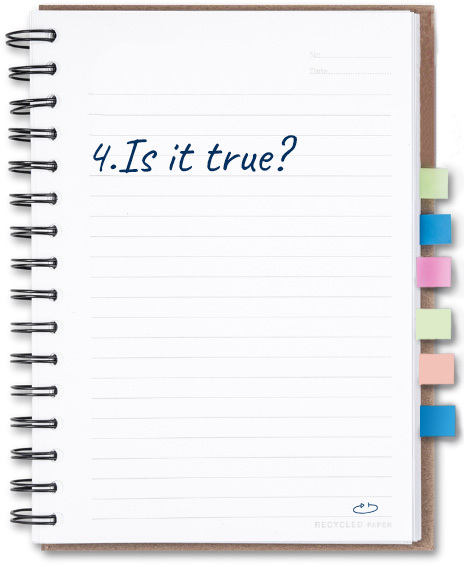
Now ask yourself: Is this actually true?
For example: You said you need chocolate when you’re feeling down. Let’s think of the last time you felt good without reaching for something you believe is bad for your health/personal fitness.
Were you listening to a favorite song? Chatting with your best friend? Watching a fantastic new show? Journaling about the things you’re grateful for?
There are no wrong answers. What other things can get you out of a sad, bored, or lazy state? Write them down. Re-read them. What do they tell you? That you can feel good without chocolate.
So it’s NOT TRUE that chocolate is the only behavior that “fixes you” when you’re feeling down.
So many other things will get you to your happy place without harming your health.
If you put your mind to it, YOU can think of hundreds of examples — hundreds of new truths that are positive and don’t affect your health.
YOU are in control.
Because YOU are aware.
YOU have the power to change YOUR truth.

Every habit consists of 3 elements – a cue, a routine and a reward.
The cue triggers the habit: I eat chocolate to improve my mood when I’m feeling down.
The routine: the act of eating chocolate.
The reward: improved mood after eating chocolate.
You must identify the cue and reward associated with the habit/behavior you want to change.
Considering that the cue will happen again (you will feel down again at some point) and you will still crave the same reward (improved mood), let’s try to change the routine that gets you there.
Once you’ve identified all three, start thinking about what would be a positive replacement for the routine you are quitting.
What will you do whenever you feel a little down? Perhaps read something inspiring? Do a quick meditation? Think of three things you are grateful for?
Think of positive thoughts/actions that could change your routine.
If an object helps – have a little reminder for your new routine/response to the habit (a beaded bracelet, a ring, a sticky note on your computer monitor, etc.).
You can change the Habit Loop.

Now that you know your cues, use your willpower to change.
You need to change the words in your narrative, knowing that this will impact the pathways in your brain, creating new connections.
If you think it’s hard to change, you’re not alone because science shows that negative words can be stronger than positive words. Often these strong negative words become our default response.
Through constant repetition, these negative thoughts come to control us. This is why you must consciously work to replace the negative with positive truthful thoughts.
Never forget that YOU are in complete control of your thoughts.
You have it in you.
You are enough.
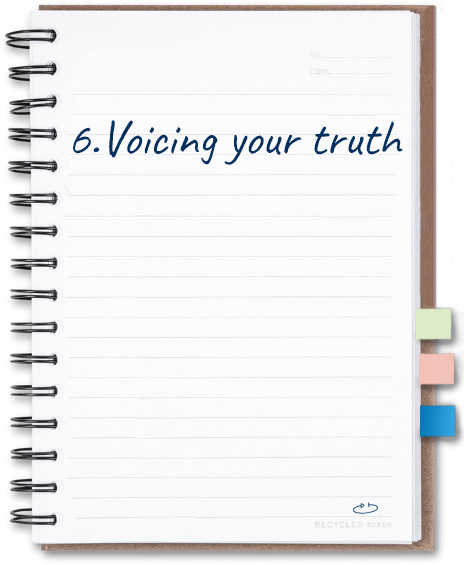
What you think and say about yourself – using the words ‘I don’t ______’ sets a positive and powerful mental agreement (something your mind believes, agrees and is strongly committed to)
Examples:
I don’t need a vape to relax.
I don’t need chocolate to feel good.
I don’t need a drink to have fun.
I don’t need to be angry at myself because I’m a good person.
I don’t skip the gym because I lead a healthy lifestyle.
It’s a simple, strong mental agreement with yourself.
This will be a defining statement for you, and all your decisions and actions will reset your truth about
who you are.
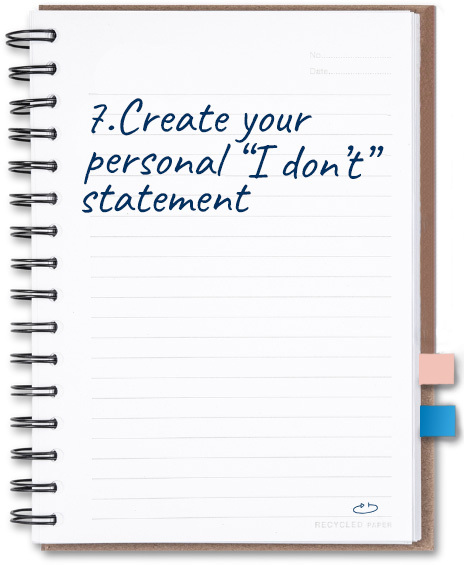
Write down your personal “I Don’t!” statement.
What positive statements will you use to replace your negative thinking?
Think of a personal, positive, truthful statement.
For example:
I don’t need to vape to relax. I’m in complete control of my habits. I am healthy.
I don’t vape.
I don’t need chocolate to feel good. I make healthy food choices and control my cravings.
I don’t eat chocolate.
I don’t need a drink to have fun. I can enjoy social situations because I love my friends, and spending time with them is what makes a great night out.
I don’t drink.
I don’t get angry at myself. Whenever I make a mistake, I remember how great I am at what I do. I learn from my mistakes and move on without generating anger.
I don’t put myself down.
I don’t skip the gym. When I feel tired or lazy, I think of the energy I will get from a workout and how my 70-year-old self will thank me for staying healthy in my youth. I’m happy that I GET TO go to the gym.
I don’t skip the gym.
I don’t text my ex. When I get lonely, I remember that I am loved for who I am. And that I’m not alone. And it makes me feel stronger every day.
I don’t text my ex.
The principle is simple: Take responsibility for yourself by managing your thoughts –
replacing the negative with the positive.
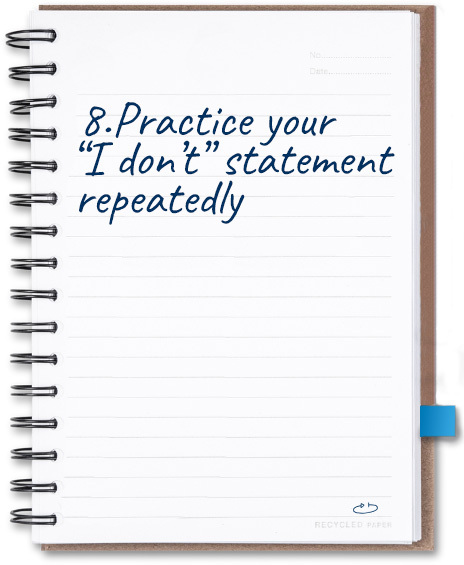
Repeat your “I don’t!” statement and new truth often throughout the day (more often at the beginning of your process).
Keep repeating it until it becomes an unconscious habit.
You are creating positive, new neural pathways that replace old, negative thoughts.
It’s up to you. Use it or lose it.

